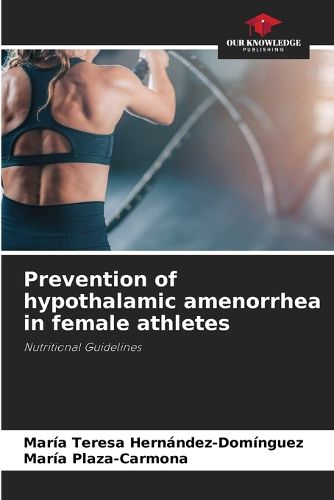Readings Newsletter
Become a Readings Member to make your shopping experience even easier.
Sign in or sign up for free!
You’re not far away from qualifying for FREE standard shipping within Australia
You’ve qualified for FREE standard shipping within Australia
The cart is loading…






During puberty, the hypothalamus pulsatile releases Gonadotropin Releasing Hormone (GnRH), stimulating the synthesis and secretion of Luteinizing Hormone (LH) and Follicle Stimulating Hormone (FSH) in the anterior pituitary. In women with Functional Hypothalamic Amenorrhea (FHA), GnRH suppression, alterations in LH pulsatility and decreased levels of LH and FSH are observed, resulting in reduced ovarian production of estradiol, progesterone and testosterone, accompanied by anovulation and amenorrhea. This disruption of the hypothalamic-pituitary-ovarian axis can be triggered by psychological stress, eating disorders, weight loss or excessive exercise. Particularly in sports where weight is crucial, excessive exercise is associated with FHA, underlining the importance of sports nutrition in its prevention and treatment. The diagnosis of FHA, linked to low energy availability, is one of exclusion, and is often confused with polycystic ovary syndrome (PCOS), which can lead to inappropriate nutritional interventions that hinder menstrual cycle recovery and overall health.
$9.00 standard shipping within Australia
FREE standard shipping within Australia for orders over $100.00
Express & International shipping calculated at checkout
During puberty, the hypothalamus pulsatile releases Gonadotropin Releasing Hormone (GnRH), stimulating the synthesis and secretion of Luteinizing Hormone (LH) and Follicle Stimulating Hormone (FSH) in the anterior pituitary. In women with Functional Hypothalamic Amenorrhea (FHA), GnRH suppression, alterations in LH pulsatility and decreased levels of LH and FSH are observed, resulting in reduced ovarian production of estradiol, progesterone and testosterone, accompanied by anovulation and amenorrhea. This disruption of the hypothalamic-pituitary-ovarian axis can be triggered by psychological stress, eating disorders, weight loss or excessive exercise. Particularly in sports where weight is crucial, excessive exercise is associated with FHA, underlining the importance of sports nutrition in its prevention and treatment. The diagnosis of FHA, linked to low energy availability, is one of exclusion, and is often confused with polycystic ovary syndrome (PCOS), which can lead to inappropriate nutritional interventions that hinder menstrual cycle recovery and overall health.